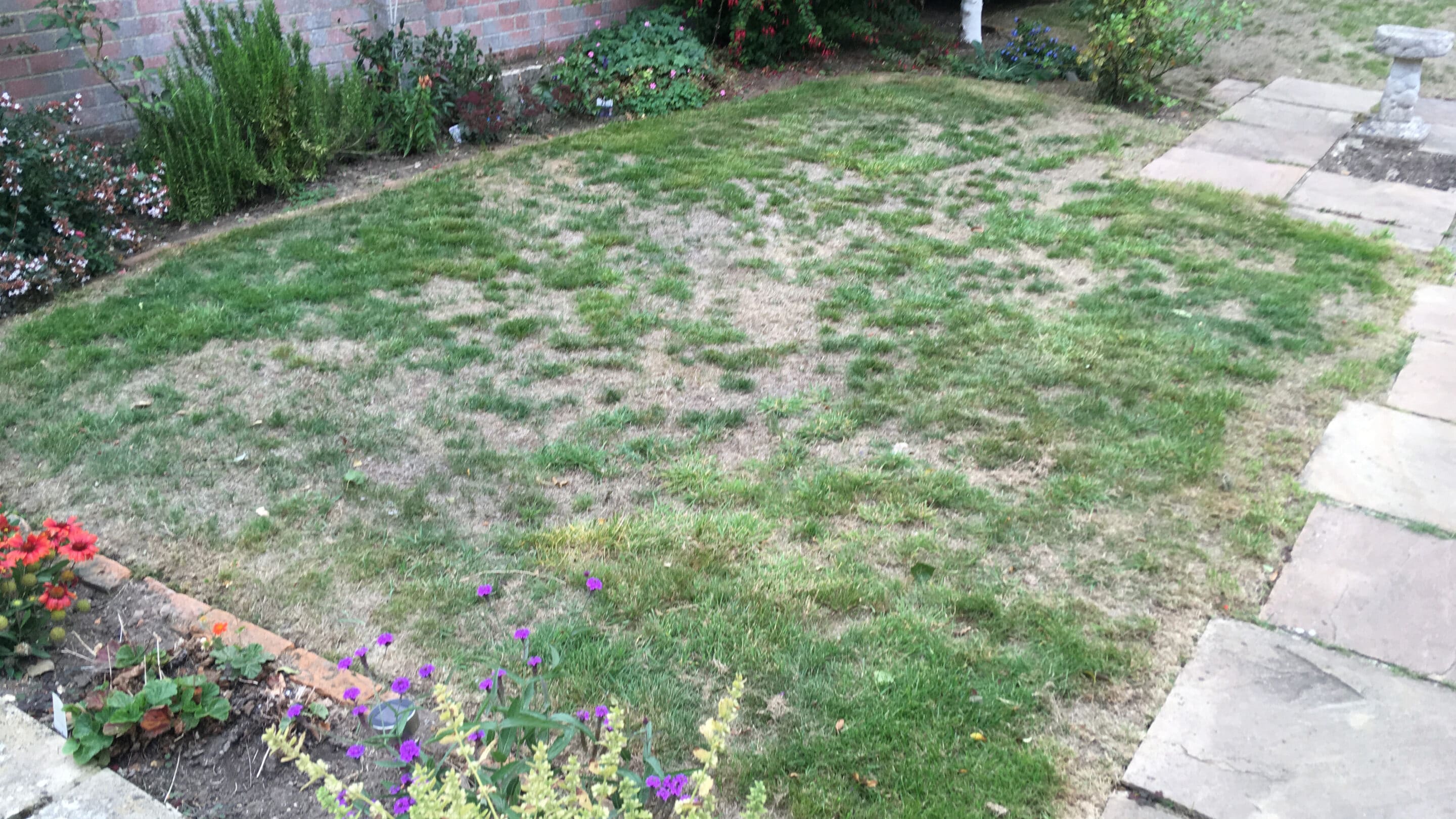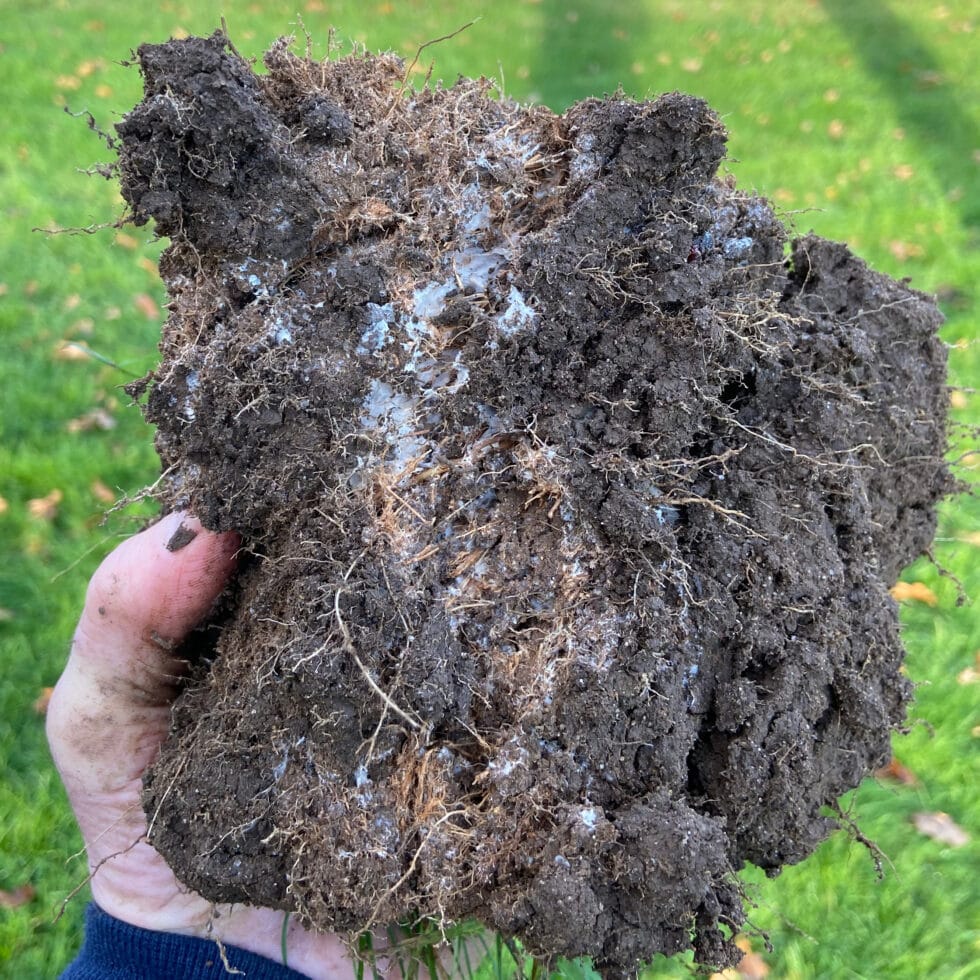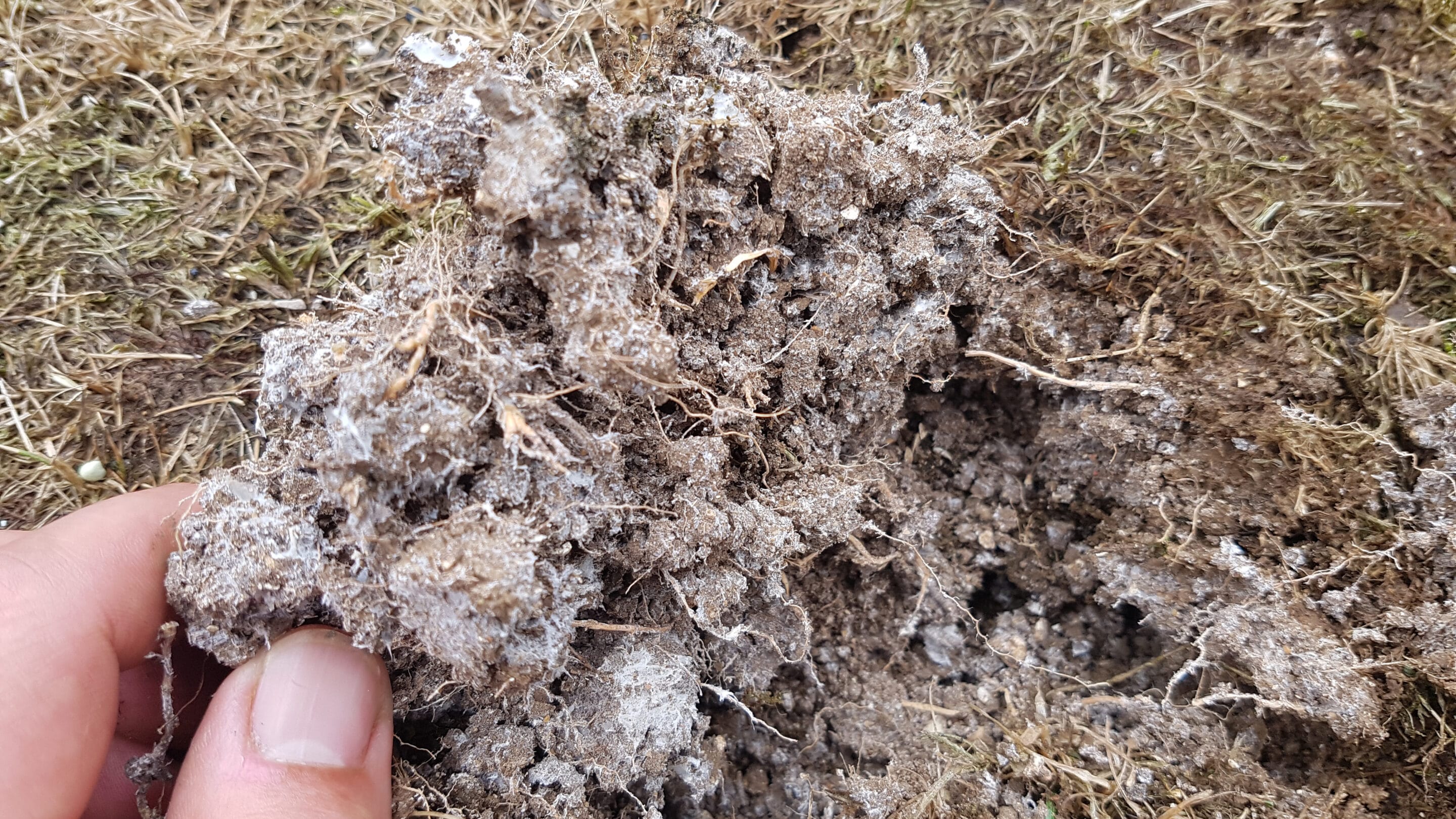Home ▸ Lawn Care Guide ▸ Lawn Disease ▸ Dry Patch Disease
Dry Patch Disease

The causes of dry patch are still somewhat unknown, but it is linked to fungal activity in the soil, with fungi releasing water repellent chemicals into the soil as it feeds and grows. Factors that can make dry patch more likely, are thick thatch levels, sandy soils and soil that contains a high level of undigested organic matter.
Although lawns can dry out in Summer due to prolonged dry spells, recovery is usually reasonably quick once adequate moisture returns. If your lawn is suffering from dry patch though, the lawn will remain brown and dry no matter how much it rains, or how much you water the lawn. Water may sit on the surface or run off the lawn, rather than penetrating the surface and running through the soil to reach the roots of the grass. If you looked at the soil underneath the grass, it will be bone dry even after a heavy rainfall.
What can be done to prevent or improve dry patch?
The first thing to do is to check the extent of the dry patch by digging test holes in the affected areas, this will determine if it is possible to control the disease with fungicides and wetting agents. In extreme cases of Dry Patch, the soil may be badly infected with white mycelium evident all the way and beyond the rootzone. In these cases, it is often impossible to kill or control the disease and the best solution is to excavate and remove the soil.
How to treat and control dry patch
- Identify the areas affected by searching for white mycelium fungus in the soil.
- Aerate the soil in multiple passes with a hollow tine aerator or verti-drainer and remove the cores, this will create a pathway for treatments and moisture.
- Ask a turf professional to apply a mixture of systemic fungicide and wetting agent at 6-weekly intervals until the soil can absorb water again.
- Scarify and remove any dead thatch, apply top dressing and over-seed the bare areas.
- On smaller patches, you can take a DIY approach by applying a mix of water and washing up liquid (1-2 tbsp. in a watering can of water should do it)
If the fungicide and wetting agent treatments don’t work after a year it is advisable to remove and replace the soil.


